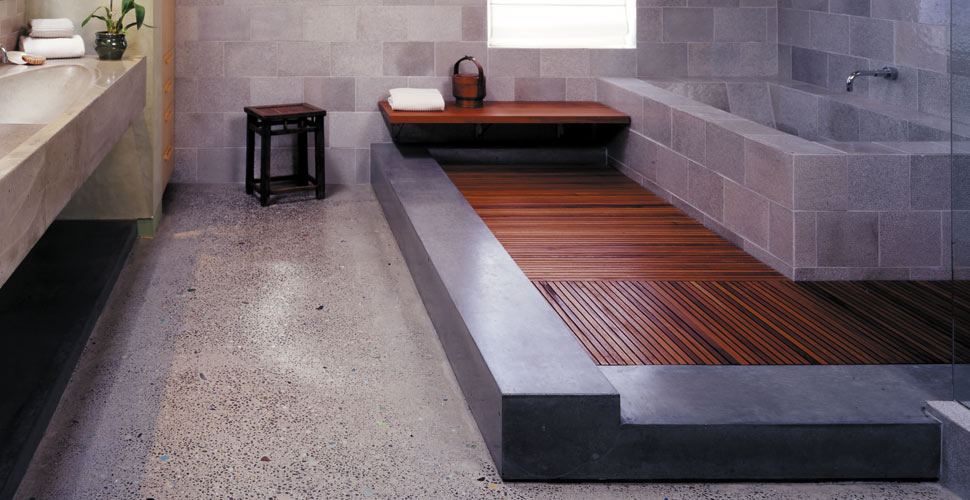Share This Post
Bathrooms: Going Beyond Countertops and Into the Shower
Q: What is the feasibility of casting a concrete shower pan? Is concrete too porous to be cast in a concrete shower; can it be sufficiently sealed and stabilized against cracking? We think it would look fantastic, but have come up empty-handed as to whether it would work.
A: I do not recommend using concrete as a finished surface in a shower. Concrete is perfectly adequate, if not recommended, for use as the shower pan base for materials such as stone, tile or mosaic tile to be used as the finish surface (as long as there is a proper membrane between the concrete and any vulnerable surrounding material). The force of water cascading from the shower-head will quickly erode a finish layer of cement paste on the floor and reveal the rough texture of the fines (sand). Over time, the exposed layer of cement will trap dirt—whereas, the aforementioned finish materials will be able to withstand the relentless water erosion. This is the primary reason I personally shy away from concrete tubs and concrete vessel sinks. I don’t think they stand a chance against the inevitability of water erosion and exposure to dirt and grime on a daily basis.
That said, with the above precautions, we have designed and poured stunning concrete shower walls, partitions, and accent curbs with spectacular results. For example, we poured an elliptical wall surround nearly eight feet high in two lifts using hyper-smooth mold forms and mixed our NeoMix Pro-Formula.
With the help of one of our Concrete Exchange Members (in Hawaii), we pumped the mixer’s hand-batched 4 cu. ft. loads up to the second story, periodically changing our color-to-cement ratio as we were pouring to get subtle tonal changes and great depth to the final color. Inlays of mosaic tiles highlight the aqua-blue, watercolor-like concrete surround walls, and it feels as though one is enveloped by water. The floor of the bathroom was also poured, embedded with cut coral and decorative aggregate, and then ground and polished.
P.S. By the way, floor drains often look better placed in a “moat” channel that drains water from around a raised standing area platform—this is a much more custom and special look than the ubiquitous, ordinary drain hole centered in the shower floor. All drain and sealants should be approached with a conservative eye for leak, crack, and seepage failure. Use brass components where possible to curb potential corrosion. And finally, wooden duckboards made of water-resistant woods such as ipe or teak in the shower area soften the hard surfaces, warm the feet, and give the soothing feel of an upscale spa. They do, however, take routine maintenance and periodic sunning to keep them fresh and free of mildew.
Share This Post

